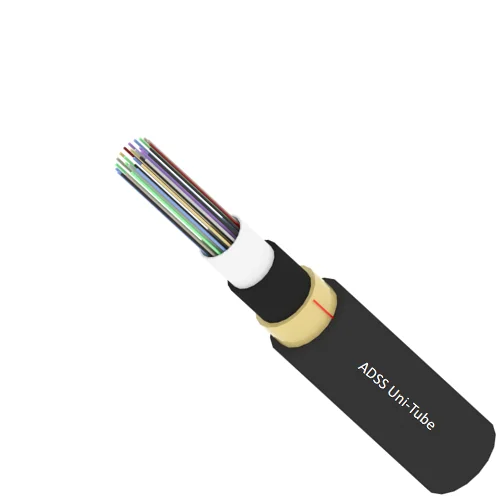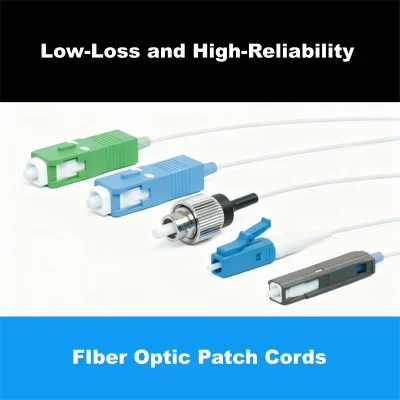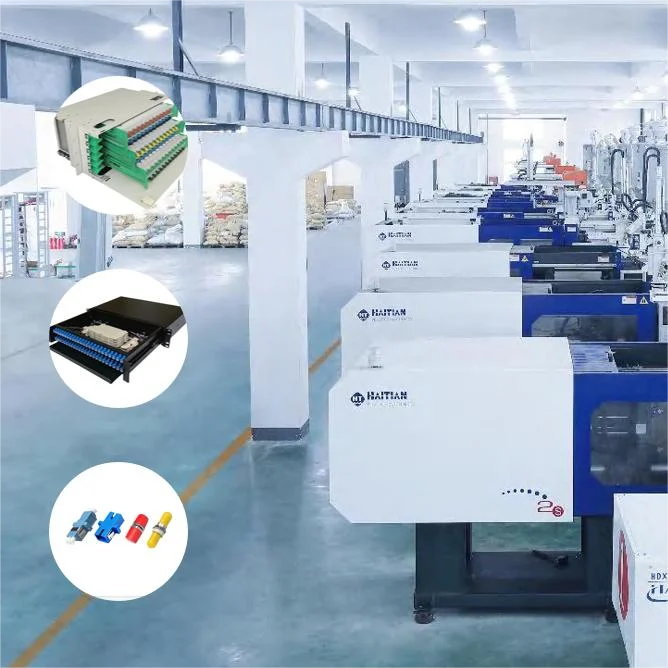Application
- Building A, Republic International Business Plaza, No. 3699 Gonghexin Road, Jing'an District, Shanghai
- +86-21-59175887
- market@soctfiber.com
- 86-17321363317
- 86-13341796231
Military
How Are Fiber Optic Cables Fortifying Modern Military Operations?
Are traditional copper communication systems a weak link in military readiness? Facing threats from jamming, eavesdropping, or data overload? Fiber optics, with their robust construction and immense capacity, offer a superior solution.
Fiber optic cables fortify military operations by providing unparalleled security against interception, immunity to electromagnetic interference thanks to their dielectric nature, massive bandwidth for data-intensive systems like radar and battlefield data links, and significant SWaP advantages, all supported by ruggedized structural designs.

In my years manufacturing advanced communication solutions at MoldAll, I’ve seen the critical role that reliable and secure data transmission plays, especially in sectors where failure is not an option. The military, with its demanding environments and high stakes, increasingly relies on the unique advantages of fiber optic technology. It’s fascinating to see how these tiny strands of glass, protected by sophisticated structural elements, are becoming the backbone of modern defense systems, from complex radar arrays to vital battlefield data links.
Why is Fiber Optic Security and EMI Resistance Vital for Military Communications?
Concerned about signal interception or electronic warfare compromising your mission? Struggling with interference in electromagnetically crowded battlefields where radar and communication systems operate? Fiber optics provide an inherently secure and resilient communication pathway.
Fiber optic security and EMI resistance are vital because their dielectric construction makes communications nearly impossible to tap without detection and completely immune to jamming or interference from electronic warfare, ensuring reliable command, control, and critical data flow for systems like radar communications.

I’ve spoken with military communication specialists who describe the battlefield as an incredibly noisy place, not just audibly, but electromagnetically. Jamming and eavesdropping are constant threats. Traditional copper cables can act like antennas, picking up interference or leaking signals that can be detected. This is where our fiber optic solutions at MoldAll offer a fundamental advantage. The very structure of a fiber optic cable, being non-metallic, means it doesn’t interact with electromagnetic fields in the same way. This is crucial for applications like radar systems, which themselves generate strong EM fields, and for maintaining clear communications in an EW-saturated environment.
Shielding Communications from Threats with Advanced Cable Structures
In modern warfare, information superiority is key, and protecting that information is paramount. The inherent design of fiber optics, often enhanced with specific structural elements, contributes significantly to this.
- Immunity to EMI/RFI: Military operations often involve powerful radar systems, communication jammers, and other electronic warfare (EW) equipment. Fiber optic cables, transmitting data as light through a dielectric glass core, are completely unaffected by these sources of interference. Their non-metallic construction, often featuring specialized jacketing materials, prevents electromagnetic coupling. This ensures that critical C4ISR data, especially for sensitive radar communication systems, remains clear and uninterrupted.
- Resistance to Tapping and Eavesdropping: Tapping into a fiber optic cable without detection is extremely difficult. The light signal is contained within the core, and any physical attempt to access it typically introduces measurable signal loss, alerting operators.
- TEMPEST Compliance: Fiber optics help in meeting stringent TEMPEST requirements. Since they don’t radiate electromagnetic signals, it’s much harder for adversaries to detect or intercept classified information.
- No Spark or Electrical Hazard: Being dielectric, fiber optic cables pose no spark hazard, making them safe for use in environments with fuel or munitions. This structural property also eliminates ground loop problems, which can plague copper-based systems in complex installations.
Let’s compare critical security aspects:
| Feature | Copper Cables | Fiber Optic Cables (with military-grade construction) | Military Significance |
|---|---|---|---|
| EMI/RFI Immunity | Susceptible; can be jammed or corrupted. | Complete immunity due to dielectric core/cladding. | Reliable comms for radar systems, EW environments. |
| Eavesdropping Risk | Higher; can be tapped inductively. | Very low; tapping is difficult and detectable. | Enhanced security for classified data. |
| Signal Emanation | Radiates EM signals (TEMPEST concern). | Negligible EM emanation. | Reduced risk of detection and interception. |
| Electrical Safety | Conductive; spark risk, ground loops. | Dielectric; no spark risk, no ground loops. | Safer in hazardous environments, improved system reliability. |
The robust security and interference immunity, rooted in the fundamental physics and enhanced structural design of fiber optics, are essential for mission success.
How Does Fiber Optic Bandwidth and SWaP Advantage Impact Military Systems?
Are your military platforms struggling with the data demands of modern sensors and networked systems like battlefield data links? Is the weight and bulk of traditional cabling limiting mobility or payload capacity for field wiring? Fiber optics offer a powerful solution.
Fiber optic’s high bandwidth supports data-intensive ISR and networked warfare applications like battlefield data links, while its low Size, Weight, and Power (SWaP) reduces platform load, increases mobility essential for field wiring, and enhances operational endurance for military systems.

At MoldAll, when we work with clients in the aerospace and defense sectors, “SWaP” is a constant refrain. Every gram matters on a drone, every centimeter in a tactical vehicle. Traditional copper cables, especially for high-bandwidth needs characteristic of modern battlefield data links or extensive field wiring, can be prohibitively heavy and bulky. Our fiber optic cables provide a dramatic improvement, enabling more agile and capable forces.
Enabling Data-Rich, Agile Forces with Efficient Cabling
Modern military operations are increasingly network-centric, relying on vast amounts of data from diverse sources, all connected through reliable links.
- Massive Bandwidth for Battlefield Data Links: High-resolution video from drones, telemetry from multiple sensors, secure real-time voice and data communications, and inputs for AI-driven analytics all flow through battlefield data links. These links demand enormous bandwidth that fiber optics effortlessly provide, ensuring commanders have a clear, real-time operational picture.
- Reduced Size and Weight for Enhanced Mobility: Fiber optic cables are significantly smaller and lighter. This SWaP reduction is crucial for:
- Aircraft and Drones: Facilitating longer missions or more sensor payloads.
- Ground Vehicles & Field Wiring: Tactical operations centers and deployed units rely on rapid field wiring. Lighter, smaller fiber cables mean quicker setup, easier transport, and less burden on personnel or vehicles. I’ve seen teams deploy kilometers of tactical fiber in a fraction of the time it would take for equivalent copper.
- Soldier Systems: Reducing the load on dismounted soldiers.
- Long-Distance Transmission without Repeaters: Essential for connecting command posts or sensor outposts over extended distances, common in dispersed military operations.
The SWaP benefits are striking:
| Parameter | High-Bandwidth Copper Cables | Fiber Optic Cables | Impact on Military Platforms & Applications |
|---|---|---|---|
| Bandwidth | Limited, degrades with distance. | Extremely high, consistent over distance. | Supports advanced ISR, battlefield data links, AI. |
| Weight | Heavier per unit of bandwidth. | Significantly lighter. | Enhances mobility for field wiring, vehicle & soldier endurance. |
| Size (Diameter) | Larger, less flexible. | Smaller, more flexible. | Easier installation, more space for other critical systems. |
| Repeater Requirement | More frequent for long distances. | Fewer or none for very long distances. | Reduced complexity and points of failure in deployed networks. |
This combination of high capacity and low physical burden makes fiber optics a game-changer for modern, agile military forces.
What Specialized Fiber Optic Solutions Are Deployed in Harsh Military Environments?
Are standard commercial fiber cables failing under the extreme stress, temperatures, or vibrations of military operations like field wiring or exposed radar installations? The defense sector requires cables with specific structural characteristics for ultimate resilience.
Specialized military-grade fiber optic solutions include ruggedized tactical cables (like TFOCA) featuring armored layers and waterproofing, hermetically sealed connectors, and cables engineered for extreme temperature resistance, ensuring operational integrity for field wiring, radar systems, and battlefield data links in the harshest environments.

Military equipment doesn’t operate in a benign environment. It’s exposed to mud, water, extreme temperatures, shock, vibration, and often rough handling during field wiring or long-term deployment for systems like radar communication systems. At MoldAll, we understand that our fiber optic cables destined for defense applications must be exceptionally robust. Their structural design incorporates features like waterproofing, high-temperature resistance, and armored layers to ensure they perform flawlessly when it matters most.
Engineered for Extreme Conditions with Robust Structures
To meet the unique challenges of military deployment, fiber optic cables are built with specific protective layers and materials.
- Waterproofing: Essential for field wiring and naval applications, waterproofing is achieved through features like:
- Gel-filled buffer tubes or cable cores.
- Water-swellable tapes and yarns that expand on contact with moisture to block ingress.
- Robust, continuous outer jacketing.
- High-Temperature Resistance: For systems near engines (vehicles, aircraft) or in hot climates (desert operations), cables use materials like FEP or specialized polymers for jacketing and buffering that can withstand continuous high temperatures without degradation. This is crucial for the reliability of radar communication systems which can generate significant heat.
- Armored Layers: To protect against crushing, impacts, rodent damage, and provide tensile strength for field wiring:
- Metallic armor: Corrugated steel tape or interlocked aluminum/steel armor offers excellent crush and rodent resistance.
- Non-metallic armor: Layers of aramid yarn (like Kevlar®) or fiberglass rovings provide high tensile strength and flexibility with less weight than metallic options.
- Tactical Fiber Optic Cable Assemblies (TFOCA): These embody many of these protective features, designed for rapid deployment and retrieval. They are the standard for robust battlefield data links and temporary communication lines.
- Specialized Connectors: Connectors like the MIL-DTL-38999 style or expanded beam connectors are designed for harsh environments, offering sealing against moisture and contaminants, and rugged mating mechanisms.
Key structural features and their benefits:
| Structural Feature | Description | Military Application Benefit |
|---|---|---|
| Waterproofing | Gel-fill, swellable tapes/yarns, robust jacketing. | Reliable operation in wet/humid conditions, submersion; critical for field wiring, naval. |
| High-Temp Resistance | Specialized polymers (FEP, PEEK) for buffering/jacketing. | Performance near heat sources (engines, electronics), desert ops; vital for radar systems. |
| Armored Layers | Steel tape, interlocked metal, aramid yarn, fiberglass. | Crush/impact/rodent protection, tensile strength; essential for rugged field wiring. |
| Rugged Jacketing | Polyurethane, specialized PVCs resistant to abrasion, chemicals, UV. | Overall cable durability and longevity in exposed environments. |
| Strain Relief | Aramid yarn strength members, proper connector termination. | Prevents damage to fibers from pulling forces during deployment and use. |
The development of these structurally enhanced fiber optic solutions ensures that communication lines remain open and reliable, no matter how tough the operational environment.
Conclusion
Fiber optic cables, with their intrinsic security, immense bandwidth, and specialized ruggedized structures featuring waterproofing and armoring, are indispensable for modern military forces, ensuring information superiority for critical applications like radar systems and battlefield data links.
Related Products
No results found.




